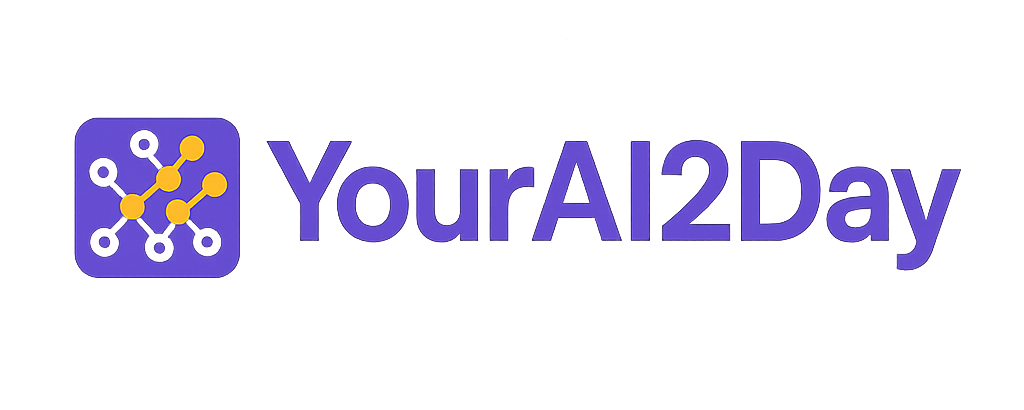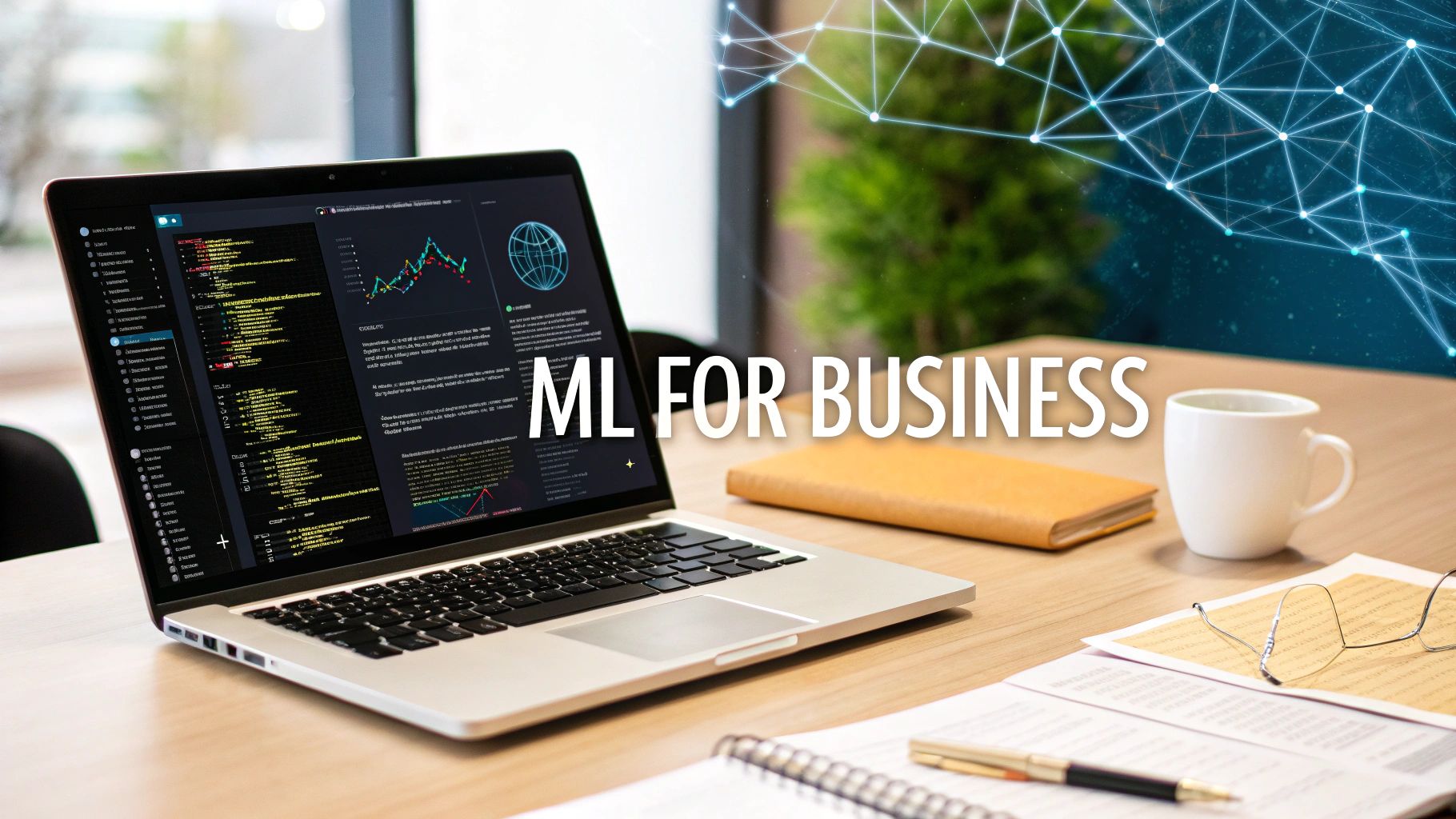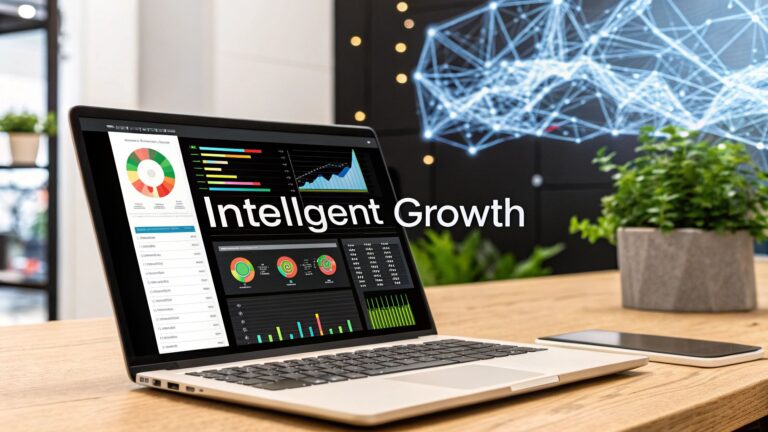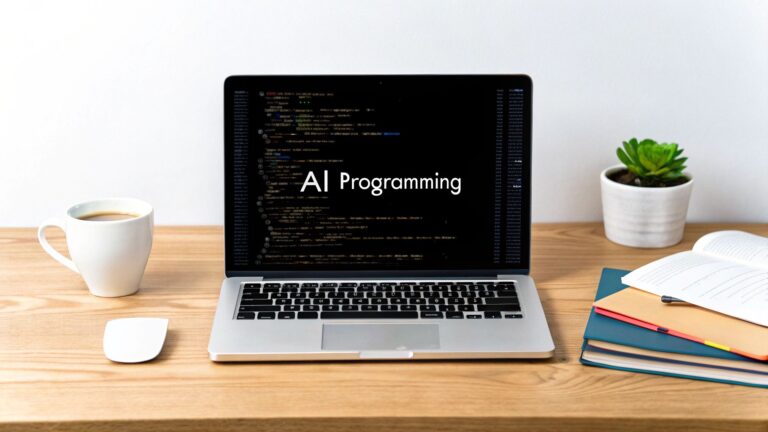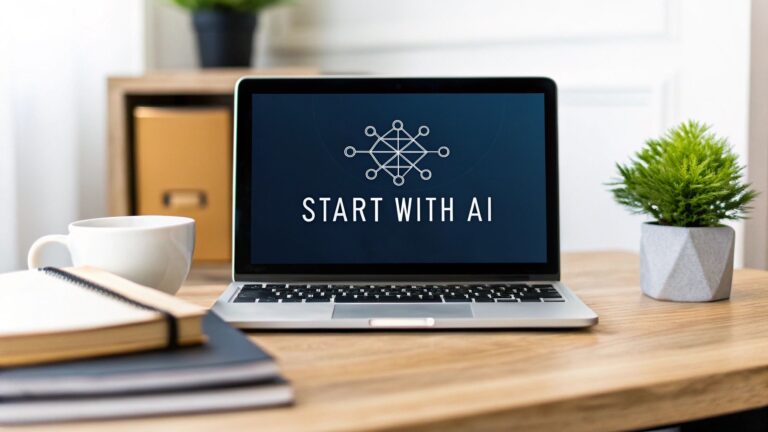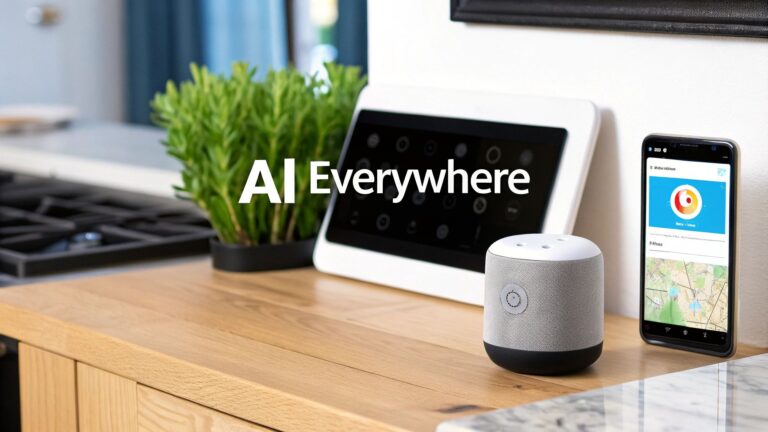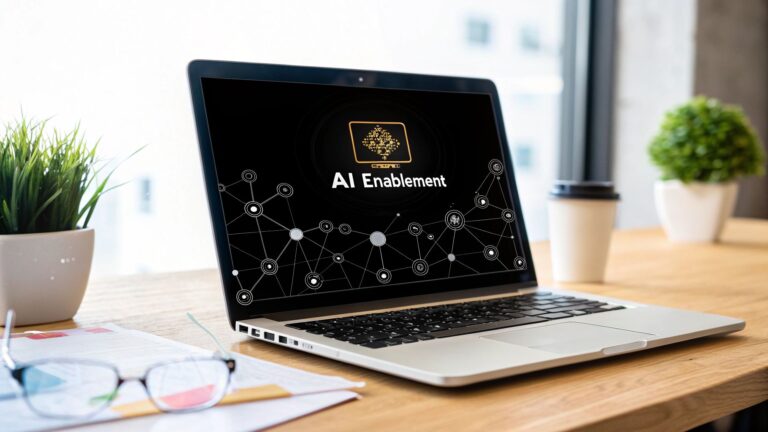Machine Learning in Business: Your Practical Guide for Beginners
Ever feel like you're just guessing what your customers will want next? Or maybe you're swamped with repetitive tasks that pull your team away from what really matters? That's the exact problem machine learning can solve. Think of it as your company's smartest new hire—one you train with your own business data to spot hidden patterns, predict future trends, and handle tedious tasks automatically.
Welcome to the Future of Business Decision Making

You don't need a PhD in data science to get the main idea. At its core, machine learning is just a way of teaching computers to learn from experience, a lot like we do, but on a massive scale. Instead of programming a computer with a rigid set of "if-this-happens, then-do-that" rules, you feed it data and let it figure out the best way to hit a target on its own. It's less about giving instructions and more about showing it examples.
Let's say you run an online store. The old-school approach would be to manually pore over last month's sales reports to figure out what to promote next. It's slow, full of guesswork, and always has you looking in the rearview mirror.
A Smarter Way to Operate
Now, let's look at it through a machine learning lens. You could train a model on years of your sales history. This digital "employee" would start connecting the dots on its own, finding relationships you'd never spot. For instance, it might discover that customers who buy hiking boots in April are 75% more likely to purchase a waterproof jacket within the next two weeks.
With that single insight, your business can start working smarter, not harder. You can automatically:
- Send a targeted email offering a discount on jackets to everyone who just bought boots.
- Recommend the perfect jacket right on the product page as they're checking out.
- Adjust your inventory to meet the coming demand before you're caught off guard.
Expert Opinion: As Andrew Ng, a pioneer in the field, often says, the key to competitive advantage isn't just having data, but being able to learn from it. "The real magic of machine learning," he might say, "isn't just about crunching numbers; it's about turning your past data into a crystal ball for the future." It helps you shift from reacting to what already happened to proactively shaping what comes next.
And this isn't some far-off technology reserved for Silicon Valley giants. It's a practical tool that businesses of all sizes are putting to work right now to get ahead. This guide will pull back the curtain on the technology, show you how it really works, and give you a clear map to get started.
How Machine Learning Actually Works
So, how does a machine really learn? It might sound like something out of a sci-fi movie, but the core idea is surprisingly straightforward. We're not building a conscious mind; we're training a computer to spot patterns in data. Think of it less like creating a sentient robot and more like coaching a very powerful, very focused intern who never gets tired.
The real magic of using machine learning in business is its ability to sift through massive amounts of information and uncover connections a human team could never hope to find. To really get a handle on it, let's break down the three main ways machines learn, using simple business scenarios you can probably relate to.
Learning with Labeled Data (Supervised Learning)
Supervised learning is the most common approach, and it's a lot like studying with flashcards. You feed the machine a huge dataset where all the "correct answers" are already provided. The machine's job is to work backward and figure out the rules that connect the questions to the answers.
Let’s say you’re building a real estate app to predict house prices. You would train the model by giving it historical data on thousands of homes. For each one, you’d provide the details (the inputs) and the price it ultimately sold for (the correct output).
- Input Data: Square footage, number of bedrooms, location, age of the house.
- Output Label: The final sale price (e.g., $450,000).
The algorithm chews on all this data, slowly learning which factors—like an extra bathroom or a specific zip code—have the biggest impact on price. After enough training, it gets so good at recognizing these patterns that you can show it a new house, and it can predict a remarkably accurate sale price. This is the same logic that powers spam filters, sales forecasts, and tools that predict which customers might be about to cancel their subscription.
Expert Opinion: Andrew Ng, a leading AI expert, often says, "AI is the new electricity." He means that just like electricity transformed every industry a century ago, machine learning is now becoming a foundational layer for countless business functions, starting with supervised tasks like these.
Finding Hidden Groups (Unsupervised Learning)
But what happens when you don't have neat, labeled data with all the "right answers"? That’s where unsupervised learning shines. Instead of giving it flashcards, you’re essentially handing the machine a jumbled box of puzzle pieces and asking it to sort them into similar groups on its own. The goal here isn't to predict a specific outcome but to uncover hidden structures in the data you didn't even know were there.
A perfect example is a streaming service like Netflix. They have millions of users, but they don't manually label them as "people who like sci-fi dramas with strong female leads." An unsupervised algorithm does that work by analyzing viewing habits and automatically clustering users into segments based on their shared tastes.
This is precisely how they generate those eerily accurate recommendations. The system identifies that you and thousands of others watch a similar mix of shows, so it suggests something popular within that cluster that you haven't seen yet. This same technique is used for customer segmentation in marketing, flagging unusual network activity, and grouping customer support tickets by topic. For a deeper dive, our guide on the differences between deep learning and machine learning can offer more context on the underlying technologies.
Learning Through Trial and Error (Reinforcement Learning)
Finally, we have reinforcement learning, which is all about learning from the consequences of actions to achieve a specific goal. It’s like training a dog with treats. You don't give it an instruction manual; you just reward it for good behavior and offer nothing for mistakes. Over time, the dog figures out exactly which actions lead to a tasty reward.
In a business setting, imagine an AI system designed to optimize the shipping routes for a logistics company.
- The AI first tries a completely random route.
- It gets a "reward" based on how much fuel and time was saved. A short, efficient route earns a high reward.
- A route with traffic jams and high fuel costs gets a low (or even negative) reward.
By running millions of these trial-and-error simulations, the system teaches itself the optimal strategies for routing trucks under different conditions. Ultimately, this can save a company a fortune in operational costs. This powerful method is also behind systems that manage stock portfolios, adjust product prices in real-time, and control robotic arms in a warehouse.
Why Your Business Needs Machine Learning Now
Knowing how machines can learn is one thing. But the real magic happens when you connect that technology to actual, measurable business results. So, let's move past the theory and talk about how machine learning in business isn't some far-off concept—it’s a requirement for staying competitive right now.
The core benefits really come down to three key areas that directly impact your bottom line. These aren't just minor adjustments; they are fundamental shifts in how you operate, serve customers, and plan for what's next.
Drive Radical Efficiency with Smart Automation
Think about all the repetitive tasks your team tackles every day. Manually sorting support tickets, processing invoices, flagging routine exceptions—these are necessary chores that eat up valuable time and energy. Machine learning offers a smarter way to automate these workflows.
A great practical example is in customer service. Instead of a simple script, an ML model can actually understand the context and sentiment of an incoming customer email. It can figure out if the person is frustrated or just curious, and automatically send it to the right department. This frees up your people to handle complex problems and build real customer relationships. In fact, some reports show intelligent automation can boost productivity by 40% or more.
Build Deeper Customer Loyalty with Hyper-Personalization
Today's customers expect you to know them. Generic marketing emails and one-size-fits-all website experiences just don't work anymore. Machine learning gives you the ability to understand individual customer behavior on a massive scale.
By analyzing everything from purchase history to browsing patterns, ML models can predict what a customer will want next. This is precisely what powers Amazon's product recommendations and Netflix's suggested shows. A Shopify store, for instance, can use an ML-powered app to show returning visitors a homepage customized with products similar to what they've viewed before. This creates a feeling that your brand "gets" them, which is a massive driver for loyalty and repeat business.
Expert Opinion: According to Shivon Zilis, an expert in AI and venture capital, "Machine learning has moved from the innovation lab to the boardroom. Companies that treat it as an optional add-on will be fundamentally outmaneuvered by competitors who use it as a core driver of their strategy. It’s no longer about whether you should adopt ML, but how quickly you can integrate it to make smarter, faster, and more customer-centric decisions."
Create Smarter Strategy with Data-Driven Forecasting
Guesswork is incredibly expensive. If you overstock inventory, you tie up capital. If you understock, you lose sales and disappoint customers. Machine learning takes forecasting from a gut-feeling guess to a data-backed science.
For example, a restaurant chain can use ML models to crunch historical sales data while factoring in external variables like holidays, local events, weather patterns, and even social media chatter to predict future demand with impressive accuracy. This gives them the insight to optimize everything from food orders to staffing, making sure they have exactly what they need, right when they need it, reducing waste and maximizing profit.
This chart breaks down the three main types of machine learning—Supervised, Unsupervised, and Reinforcement—and how each learns from data in a different way.
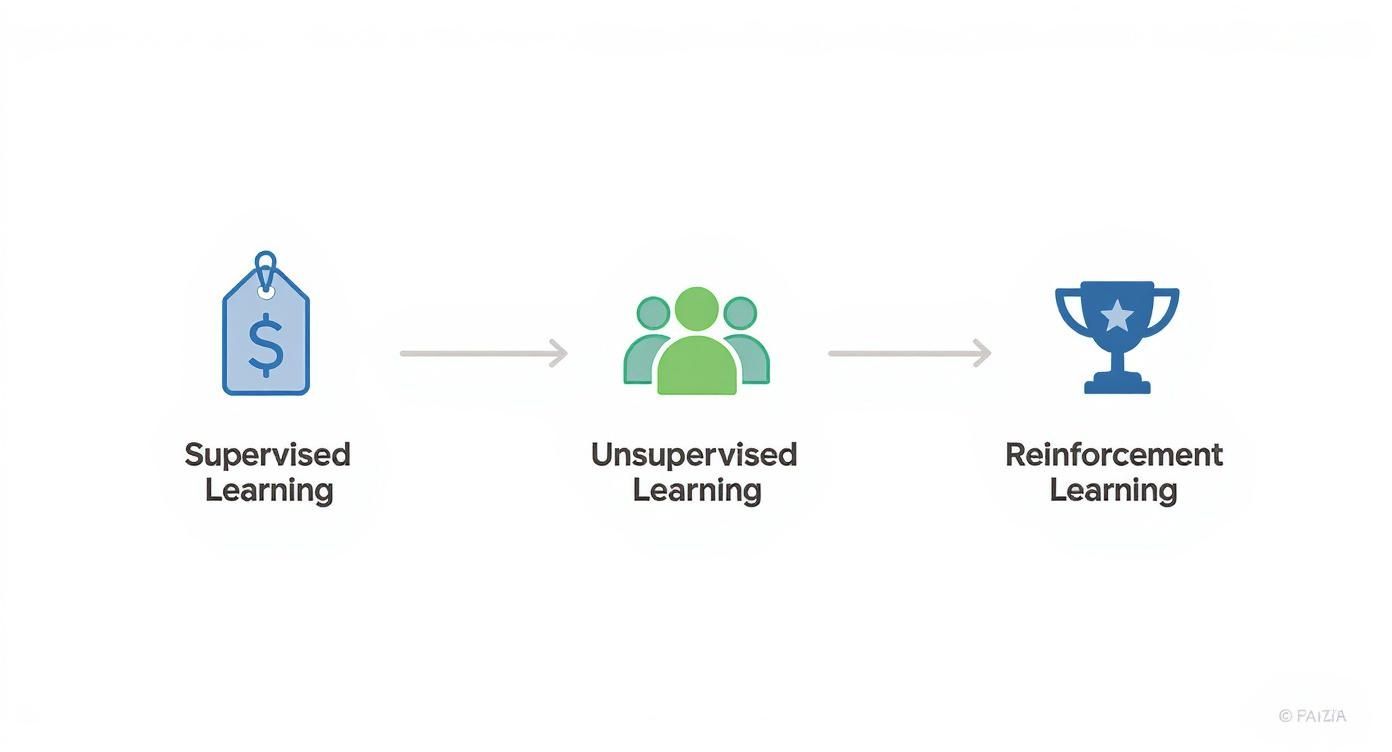
As you can see, the right approach depends entirely on your goal, whether that's predicting a specific number, finding hidden patterns in your customer base, or optimizing a complex process over time.
Traditional Business Methods Vs Machine Learning Approaches
To really grasp the difference machine learning makes, it helps to see a side-by-side comparison. The table below shows how ML isn't just an upgrade—it's a complete reimagining of how common business functions are handled.
| Business Function | Traditional Approach | Machine Learning Approach |
|---|---|---|
| Customer Support | Manual ticket sorting based on keywords. | Automatic sentiment analysis and intelligent routing to the correct agent. |
| Inventory Management | Forecasting based on past monthly sales reports. | Predictive forecasting using historical data, seasonality, and external trends. |
| Marketing Campaigns | Broad demographic segmentation (e.g., age, location). | Hyper-personalized campaigns based on individual user behavior and predictions. |
| Fraud Detection | Rule-based systems that flag pre-defined suspicious actions. | Real-time anomaly detection that identifies new and unusual patterns of fraud. |
As the table shows, the machine learning approach isn't just a slightly better version of the old way. It introduces a more intelligent, predictive, and efficient method of operating across the entire business.
Real-World Examples of Machine learning in Action
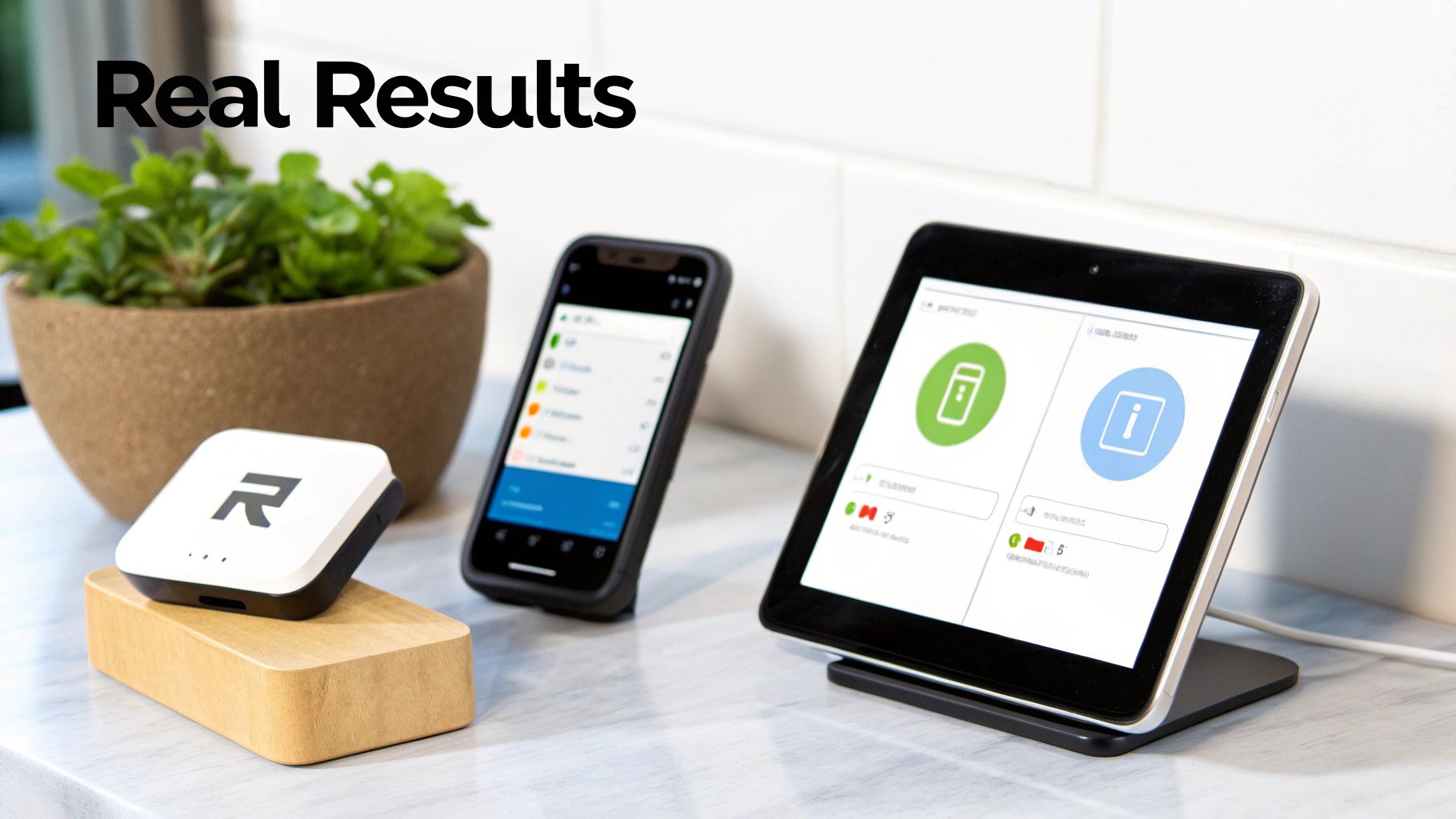
It’s one thing to talk about models and algorithms, but the real magic of machine learning in business happens when it solves actual problems. This is where the theory hits the road, showing how companies are getting a serious competitive advantage by making their data work for them.
Let's jump into a few stories from different industries to see what this looks like in practice.
Finance: Protecting Customers and Capital
The world of finance moves at the speed of light, with millions of transactions flying around every second. It's flat-out impossible for human teams to eyeball every single one for fraud. This is a perfect job for machine learning.
Take a major credit card company like Visa or Mastercard. Their challenge is immense: how do you spot a fraudulent purchase instantly without accidentally blocking a legitimate one and frustrating a customer?
The answer is an ML model that chews through dozens of data points in real time with every swipe or tap. It looks at the purchase amount, the store's location, the time of day, and the customer's typical spending patterns. If you live in Chicago and suddenly a $5,000 charge pops up in another country at 3 AM, the model instantly flags it as a high-risk outlier and can block the transaction on the spot.
This isn't some rigid "if-then" rule. The system is always learning and adapting, constantly fine-tuning its understanding of normal versus suspicious behavior. The result is a massive drop in fraudulent losses while genuine transactions go through without a hitch.
Retail: Creating the Perfect Shopping Trip
Ever browse a site like Amazon and get the feeling it knows exactly what you want? That’s no accident—it's a powerful recommendation engine in action. These systems are all about creating a personal shopping experience that keeps you coming back.
For a retailer with millions of products, the problem is obvious: how do you connect a shopper with something they'll actually love? An ML model cracks this code by analyzing mountains of data:
- Your past purchases: What have you bought before?
- Your browsing history: What did you look at but not buy?
- Behavior of similar users: What do people with your tastes tend to buy together?
By weaving these threads together, the system does more than just suggest random products. It builds a personalized storefront for every single user, showing them things they're statistically likely to want. This strategy is wildly effective, with some estimates suggesting that recommendation engines can drive over 35% of a retailer's sales.
The goal isn’t just to sell one more item. It's about making the customer feel understood, which turns a one-time buyer into a loyal, repeat customer. Machine learning makes this level of personalization possible at a massive scale.
Healthcare: Personalizing Patient Outcomes
The healthcare industry is also being reshaped by machine learning. One of the most exciting areas is personalized medicine, where treatment plans are tailored to an individual’s unique health profile instead of a one-size-fits-all approach.
Imagine a hospital trying to predict which patients are at the highest risk for complications after surgery. An ML model can sift through thousands of patient records, spotting subtle patterns in lab results, vital signs, and medical histories that a human doctor might miss. By flagging high-risk individuals early, medical teams can step in with proactive care, potentially stopping a critical event before it even starts.
This data-first mindset is changing the game across the board. For example, in finance, 85% of banks now use AI and ML to find data-driven insights. The European banks that made the switch reported up to a 20% reduction in customer churn. Healthcare is also booming; the global AI in healthcare market is projected to leap from $19.27 billion in 2023 to over $613 billion by 2034.
These are just a few examples, and the applications are growing every day. To get a wider view of what's possible, check out our guide on the top use cases for machine learning across even more sectors. The common thread is clear: businesses are using data to solve their toughest challenges in smarter, faster ways.
A Practical 4-Step Roadmap to Your First Machine Learning Project

So, you're ready to put machine learning to work. Great! The good news is you don't need a massive budget or a dedicated data science team to get started. The secret is to think small and solve a real problem with a clear, measurable payoff.
Let's walk through a simple, four-step plan designed for business leaders, not coders. This is your game plan for making a confident leap into ML without getting bogged down in technical details.
1. Pinpoint a Specific Business Problem
Forget about algorithms and models for a minute. The first and most important question you should ask is: What's the one thing we need to fix or improve? The best ML projects aren't about technology; they're about solving a nagging business issue. Don't start with the tool. Start with the problem.
Where should you look? Often, the best opportunities are hiding in plain sight:
- Customer Churn: Can you get an early warning when a customer is about to leave?
- Inventory Management: Can you stop guessing and start accurately forecasting what you’ll need for your top 5 products?
- Sales Lead Quality: Can you automatically score leads so your sales team can focus on the hottest prospects first?
Zero in on a single issue where a better prediction would have a direct impact on your bottom line.
2. Take Stock of Your Data
Machine learning runs on data. Simple as that. Your next job is to see what you've got. You don't necessarily need "big data," but you absolutely need the right data.
Go back to the problem you just identified. If you want to predict customer churn, you’ll need things like usage patterns, past support tickets, and how long they’ve been a customer. It’s all about quality, not just quantity. Think of your data as the fuel for your project—make sure it’s clean, relevant, and ready to go. You can find a deeper dive into this process in our guide on implementing AI in your business.
Expert Opinion: “Don’t boil the ocean,” advises Thomas Dinsmore, author of Disruptive Analytics. “The most common mistake I see is companies trying to solve every problem at once. Pick one specific, painful issue and use machine learning to solve it. A small win builds momentum and proves the value of the technology to the rest of the organization.”
3. Explore Your Implementation Options
You don't have to build everything from the ground up. These days, there are plenty of ways to get a machine learning project off the ground. You might find that a tool you already use, like a modern CRM, has powerful ML features baked right in. Or, you could bring in a freelance specialist or a small agency to handle the technical heavy lifting. Your budget, timeline, and internal expertise will point you to the right path.
4. Run a Small, Focused Pilot Project
This is the most important step. Don't try to change the whole company overnight. Start with a small, low-risk pilot project to test your idea and show what's possible. Instead of overhauling your entire inventory system, for example, build a model to forecast demand for just a single product line.
A successful pilot gives you tangible results and helps you iron out the wrinkles before you make a bigger commitment. It’s that initial proof of concept that gets everyone else on board. And the momentum is real; by 2025, 78% of organizations were using AI in at least one business function, up from just 55% the year before. You can read more about these AI adoption statistics to see just how fast things are moving.
Got Questions About Machine Learning? Let's Clear Them Up.
Even with a solid plan, a few questions always pop up. When you're looking at bringing a technology like machine learning into your business, it’s the practical details that really matter. Let’s walk through some of the most common things business leaders ask when they’re ready to make a move.
Think of this as your practical, no-nonsense FAQ for getting past those last few uncertainties.
How Much Is This Really Going To Cost?
This is usually the first question, and the most honest answer is: it depends. There’s no simple price tag for implementing machine learning.
For a smaller business, the best place to start is often with the software you already use. Many modern CRMs (like HubSpot) and marketing platforms (like Mailchimp) have powerful machine learning features built right in—think automated lead scoring or product recommendations. You might find you're already paying for the tools you need.
If you're building a dedicated project from the ground up, start small. A focused pilot project using cloud-based ML services could run anywhere from a few thousand to tens of thousands of dollars. On the other end of the spectrum, building a completely custom solution with an in-house team can easily climb into the six-figure range and beyond.
The real question isn't about the upfront cost, but the return on investment (ROI). Kick things off with a project that has a clear, measurable outcome, like reducing customer churn by 10%. A successful pilot will quickly prove its worth and pay for itself.
Do I Need "Big Data" To Get Started?
Absolutely not. This is one of the biggest myths out there. While it's true that more high-quality data is almost always better, you don't need a Google-sized ocean of it to get meaningful results. What matters most is the quality and relevance of your data, not just the volume.
The right amount of data really just depends on the problem you're trying to solve. For example, a small e-commerce shop wanting to forecast sales for its top 10 products might only need a few years of clean, well-organized sales history to build a surprisingly accurate model.
The focus should always be on having the right information, not just a lot of it.
What's The Difference Between AI And Machine Learning Anyway?
It’s really easy to mix these two up, and people often use them interchangeably. But they aren't the same thing. Let's break it down with a simple analogy.
Think of Artificial Intelligence (AI) as the whole field—the grand goal of building machines that can think, reason, and learn like humans. It’s the entire universe of "smart" technology.
Machine Learning (ML) is a specific technique—and by far the most successful one—for achieving AI. It's a subset of AI where instead of programming a computer with explicit rules, you teach it to find its own patterns and make predictions by feeding it data.
So, all machine learning is AI, but not all AI is machine learning. AI is the destination; ML is one of the most powerful engines you can use to get there.
Ready to see what else is possible with AI and how it can reshape your business strategy? At YourAI2Day, we bring you the latest news, tools, and expert insights to keep you on the front foot. Explore our resources today!
